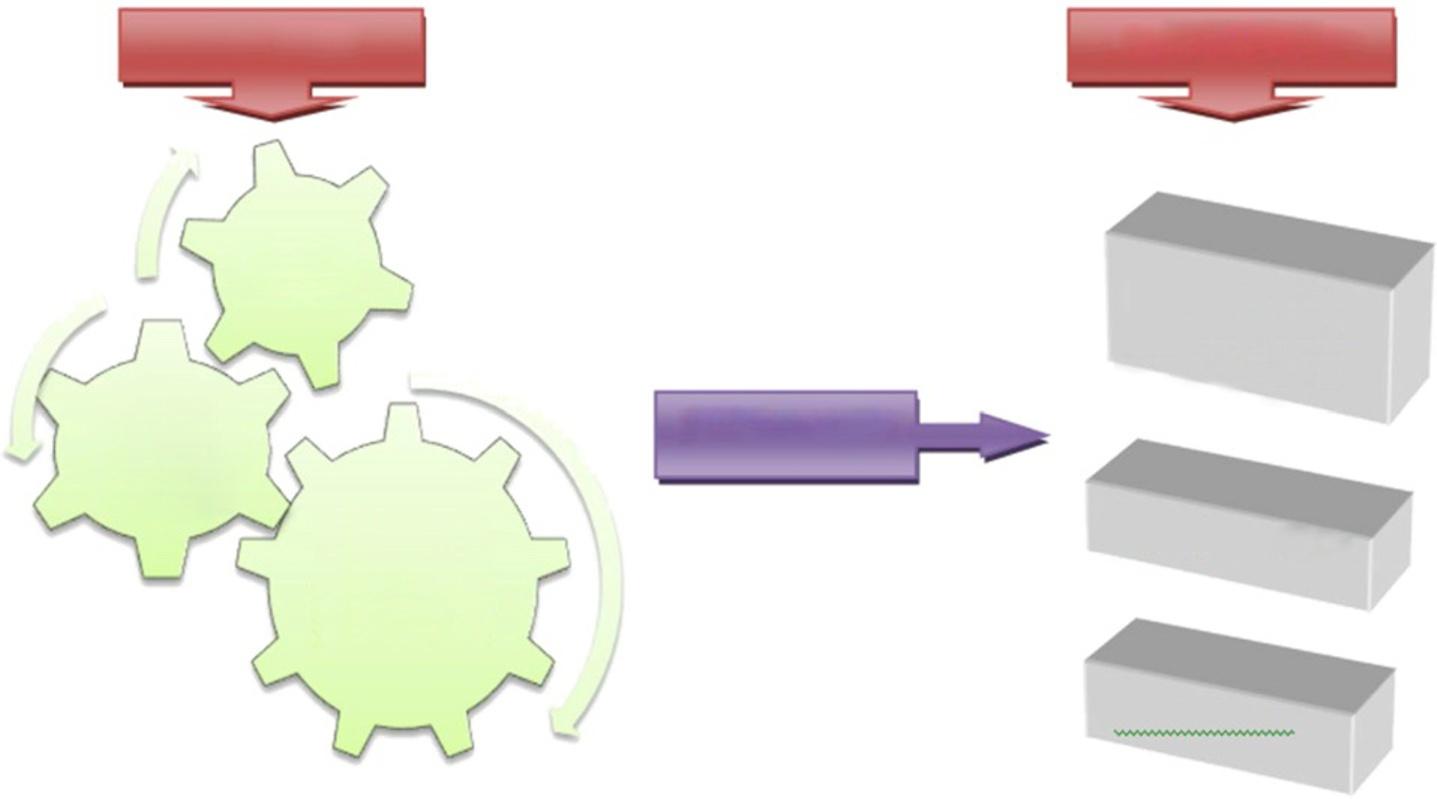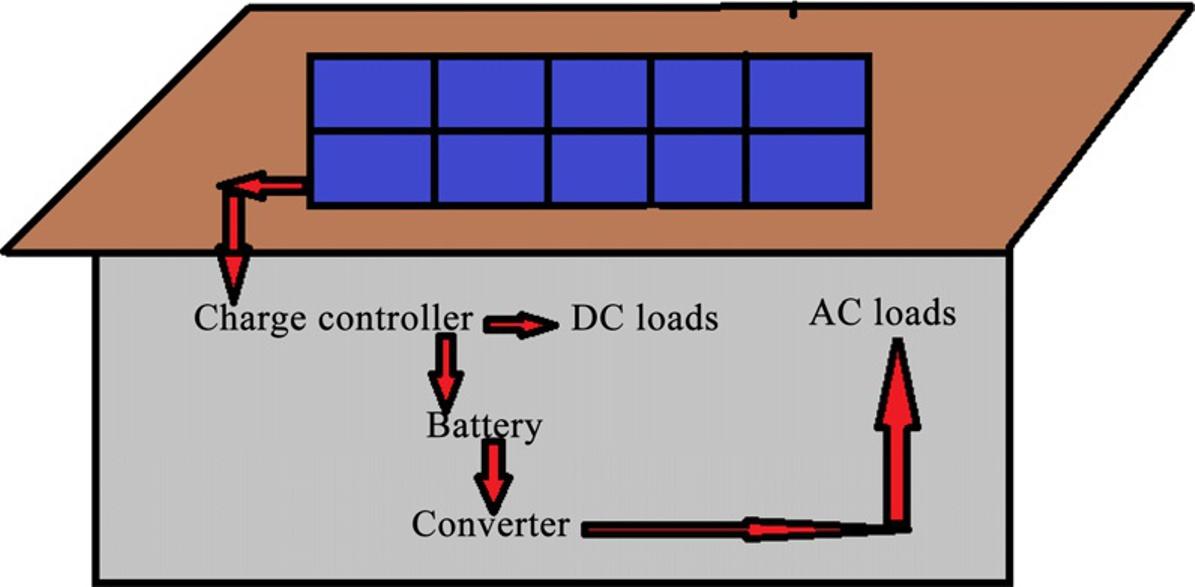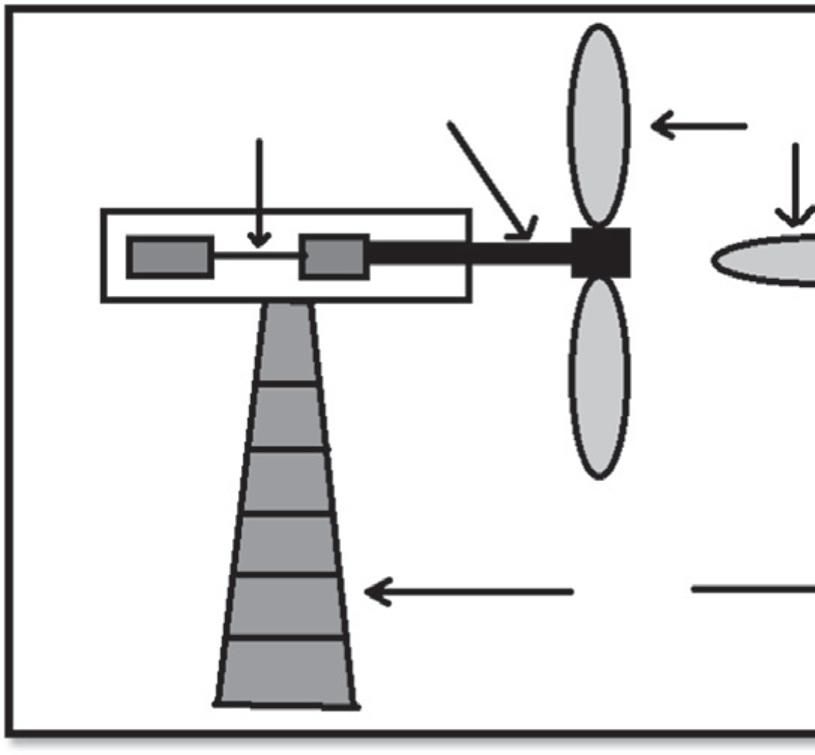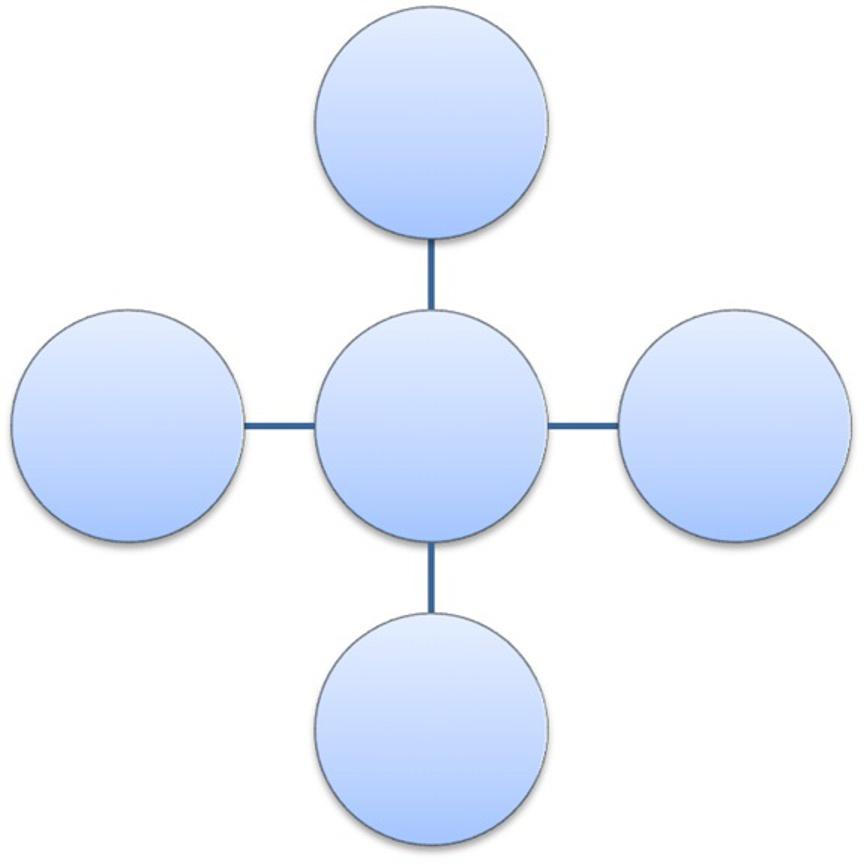Tidal Energy Systems: Design, Optimization and Control Vikas Khare
Visit to download the full and correct content document: https://ebookmass.com/product/tidal-energy-systems-design-optimization-and-control -vikas-khare/



Visit to download the full and correct content document: https://ebookmass.com/product/tidal-energy-systems-design-optimization-and-control -vikas-khare/


VIKASKHARE
AssociateProfessor,ElectricalSchoolofTechnology,Management andEngineering,NMIMS,Indore,India
CHESHTAKHARE
DepartmentofElectricalEngineering,SGSITS,Indore,India
SAVITANEMA
DepartmentofElectricalEngineering,MANIT,Bhopal,India
PRASHANTBAREDAR
EnergyCentre,MANIT,Bhopal,India
Radarweg29,POBox211,1000AEAmsterdam,Netherlands
TheBoulevard,LangfordLane,Kidlington,OxfordOX51GB,UnitedKingdom 50HampshireStreet,5thFloor,Cambridge,MA02139,UnitedStates
© 2019ElsevierInc.Allrightsreserved.
Nopartofthispublicationmaybereproducedortransmittedinanyformorbyanymeans,electronic ormechanical,includingphotocopying,recording,oranyinformationstorageandretrievalsystem,without permissioninwritingfromthepublisher.Detailsonhowtoseekpermission,furtherinformationabout thePublisher’spermissionspoliciesandourarrangementswithorganizationssuchastheCopyright ClearanceCenterandtheCopyrightLicensingAgency,canbefoundatourwebsite: www.elsevier.com/ permissions
ThisbookandtheindividualcontributionscontainedinitareprotectedundercopyrightbythePublisher (otherthanasmaybenotedherein).
Notices
Knowledgeandbestpracticeinthisfieldareconstantlychanging.Asnewresearchandexperience broadenourunderstanding,changesinresearchmethods,professionalpractices,ormedicaltreatment maybecomenecessary.
Practitionersandresearchersmustalwaysrelyontheirownexperienceandknowledgeinevaluating andusinganyinformation,methods,compounds,orexperimentsdescribedherein.Inusingsuch informationormethodstheyshouldbemindfuloftheirownsafetyandthesafetyofothers,including partiesforwhomtheyhaveaprofessionalresponsibility.
Tothefullestextentofthelaw,neitherthePublishernortheauthors,contributors,oreditors,assume anyliabilityforanyinjuryand/ordamagetopersonsorpropertyasamatterofproductsliability,negligence orotherwise,orfromanyuseoroperationofanymethods,products,instructions,orideascontained inthematerialherein.
LibraryofCongressCataloging-in-PublicationData
AcatalogrecordforthisbookisavailablefromtheLibraryofCongress
BritishLibraryCataloguing-in-PublicationData
AcataloguerecordforthisbookisavailablefromtheBritishLibrary
ISBN:978-0-12-814881-5
ForinformationonallElsevierpublications visitourwebsiteat https://www.elsevier.com/books-and-journals
Publisher: KatieHammonAcquisitionEditor: RaquelZanol
EditorialProjectManager: KarenR.Miller
ProductionProjectManager: BharatwajVaratharajan
CoverDesigner: MarkRogers
TypesetbySPiGlobal,India
VikasKhare isanassociateprofessorinSchoolofTechnology,Management,andEngineering,NMIMS,IndoreM.P.,India.HeobtainedhisMTech(Honors)inenergymanagementfromDAVVIndore,India,andhisPhDfromNationalInstituteofTechnology inBhopal,India.Hismainresearchinterestsarerenewableenergysystems,optimization techniques,andgametheory.HeisalsoacertifiedenergymanagerundertheBureauof EnergyEfficiencyinIndia.Dr.KharehaspublishedvariousresearchpapersinInternationalrepudiatedjournalsandpublishedbooksonthetitlesof“RenewableEnergy”and the“FundamentalsofElectricalandElectronicsEngineering”.
CheshtaKhare obtainedherME(Honors)inpowerelectronicsatSGSITS,India, wheresheisalsopursuingherPhDinpowersystems.Mrs.Khareisanassistantprofessor intheDepartmentofElectricalEngineeringatSGSITSinIndore,India.
SavitaNema hasover20yearsofexperienceinresearchinrenewableenergyandcontrolsystems,andholdsbothanMEincontrolsystemsandaPhDinsolarphotovoltaics. Dr.Nemahasledseveralresearchprojectsandhaspublishedover40journalandconferencepapers.SheiscurrentlyaprofessorandheadattheDepartmentofElectricalEngineeringatMANITinBhopal,India.
PrashantBaredar isanassociateprofessorintheenergydepartmentatMANITinIndia. HereceivedhisPhDinhybridenergysystemsfromRajivGandhiTechnologicalUniversityinBhopal.Dr.Baredarhas20yearsofexperienceinmechanicalengineering.Heison theeditorialboardofmanyinternationaljournals,includingBLBIJESTandNational JournalofEngineeringScience,andisareviewerforfourinternationaljournals.Hehas successfullyorganizedfivenationalseminarsandconferencesonenergytopicsandhas delivered25expertlecturesandinvitedtalks.Hehasguided6PhDthesesand42MTech theses.Hehaspublishedonepatentonareconfigurablemechanismforwindturbine blades.Dr.Baredarhaspublished102researchpapersinnational/internationaljournals andatconferences,andhascontributedtothebooksentitled BasicMechanicalEngineering, PracticalJournalofBasicMechanicalEngineering,RenewableEnergySources and PracticalJournalof BasicCivilEngineering&EngineeringMechanics.Hehasservedasaconsultantonprojectssuch astheinvestmentgradeenergyauditoftheRajgarhCollectorateBuildingandfindinga solutiontoreducingbearingtemperatureinhydroturbinesintheIndiraSagarHydro Powerplant.Anumberofhighlevelresearchprojectsfundedbybothstateandcentral governmentaretohiscredit,andheisworkingonaprojectconcerningthesensitivity analysisandoptimizationofahybridsystemcombiningsolar,wind,andbiomasspower (Rs.452,000),fundedbyMadhyaPradeshCouncilofScience&TechnologyinBhopal.
In physics andthefieldofengineering,energyisaversatilepropertyofageneroussystem thatcannotbedirectlypragmaticbutcanbeevaluatedfromonecircumstancetoanother withcertainperformanceparameters.Energyplaysanimportantroleinanyphysicalsystemandindifferentengineeringapplications,butitisdifficulttogiveadefinitionof energyinabroadwaybecauseoneformofenergyconvertsintodifferentformsof energy.However,themostfrequentdefinitionisthatitisthecapabilityofasystem toperformdesired work. Arunningpersonissaidtobemoreenergeticcomparedto asleepingperson.Inphysics,amovingparticleissaidtohavemoreenergythananidenticalparticleatrest.
Thecharacterizationofworkinengineeringphysicsisthefactionofa force throughoutadistanceandenergyisdeliberateintheidenticalunitsaswork.Ifanyhumanbeing pushesanentity n meters besideaconflictingforceof f newton, fn joules(Newton-meters) ofworkhasbeendoneonthegivenentity;thepersonnelbodyhaslost fn joulesofenergy andtheentityhasgained Fx joulesofenergy.In Fig.1.1,apersonemittedradiation energyfromhisorherowneyes,whichshowshowthepoweroftheeyecanbeconvertedintoradiationenergy.The SI unitofenergyisgivenbythe joule (J)(theequivalent

Fig.1.1 Radiationenergyfromeyes.
toanewton-meterora watt-second),the CGS unitisthe erg, andthe Imperial unitisthe footpound. Otherenergyunitssuchasthe electronvolt,calorie,BTU,and kilowatt-hour (1kWh ¼ 3600kJ)areusedinspecificareasofscienceandcommerce.Duetotheconservedproperty,thereisamajorsignificanceofenergyinengineeringbecauseitdepends onthe lawofconservationofenergy, whichstatesthatenergycanneitherbecreatednor destroyedbutcanbechangedintodifferentforms.Forexample,inamixergrinder,electricalenergyconvertsintomechanicalandsoundenergy.Ahairdryerisoneofthebest examplesthatshowshowoneformofenergyconvertsintoadifferentformofenergy. That’sbecause,inahairdryer,electricalenergyisconvertedintomechanicalenergy, thermalenergy,andsoundenergy.Bothexamplesshowthephenomenonof energy transformation becauseenergytransformationisthechangeofenergyfromoneformto another.
Energytransformationoccurseverywhereeverysecondoftheday.Energyisconvertedfromoneformtoanotherform;thisconversionisalsopartofenergytransformation,suchasthroughfuelcell chemicalenergy conversionintouseful electricenergy. For electricitygenerationthroughhydroenergy,first gravitationalpotentialenergyis convertedinto kineticenergy andthenthekineticenergyisconvertedintouseful electric energy throughaDCorACgenerator. Carnot’stheorem andthe secondlawof thermodynamics presentedsomedifficultiesregardingwhenenergycanbetransformed intootherformsofenergyby work and heat. Energyisascalaraswellasvectorquantity becausethedirectionofconversionandtransformationofenergyiselaboratedby entropy considerations.Mostenergytransformationsaredoneonasmallscale,butcertainlarger transformations,suchasthetransformationofelectricalenergy,arepossiblewiththehelp ofadditionalequipment. Fig.1.2 showsenergytransformationinwhichelectrical energy,mechanicalenergy,thermalenergy,soundenergy,chemicalenergy,andlight energyareconvertedfromoneformintoanother.
Fig.1.3 showstypesofenergytransformationintheformofrenewableandnonrenewableenergysources.Transformationofenergyintoconstructiveworkisaninnermostandprimarypartofthermodynamics.Attheprimarylevel,thetransformationof

Fig.1.2 Two-waypathofenergytransformation.

Energy transformation
Reversible transformation
Renewable energy source
Nonreversible transformation
Nonrenewable energy source
Fig.1.3 Typesofenergytransformation.
energyisdoneintwoways: reversible thermodynamicsand irreversible thermodynamics.Inthemechanical-to-electricalanalogy,thermodynamicallyreversibleisrelatedto renewableenergysourcesandthermodynamicallyirreversibleisrelatedtononrenewable energysources.Areversibleprocessisoneinwhichthiskindofindulgencedoesnot occur.Inthiscase,theenergymustpartiallycontinueasheatandcannotbeentirely recoveredasausefulformofenergy.
Electricitythroughelectricalenergyisproducedbytheconversionandtransformationof availableenergy,whichisavailableindiverseformssuchasseveralnaturalsourcesthat includewindenergy,kineticenergyofwater,chemicalenergyoffuels,andnuclear energyofradioactivesubstances.Differentnaturalenergysourcesareoneofthemajor inputsforthemonetaryandfinancialgrowthofanynation.Indifferentdevelopingcountries,conventionalandnonconventionalenergysectorsareconsideredtobecritically importantforever-increasingenergyconsumption,whichrequiredenormousinvestmentstomeetsuchdemand.Besidesnonconventionalmethodsofelectricitygeneration,
conventionalmethodsofpowergenerationproduceelectricalenergythroughtheuseof primemoverssuchasdieselengines,petrolengines,andsteamengines,whicharealso usedfordrivingelectricalmachinesfortheconversionofelectricaltomechanicaland mechanicaltoelectricalenergy.Theothermethodsofproducingelectricalenergywithouttheuseofprimemoversarecallednonconventionalmethodsofelectricity generation.
Energycanbeclassifiedintoseveraltypesbasedonthefollowingcriteria:
•Primaryandsecondaryenergy.
•Commercialandnoncommercialenergy.
•Renewableandnonrenewableenergy.
Primaryandsecondaryenergysourcesarethefirststageofclassificationofdifferent energysourcesforelectricitygeneration.Primaryenergyistheonethatthosesources thatonlyengrossinsertionorexertionwithorwithoutpartitionfromcontiguousmaterial,cleaningorgrading,beforetheinputenergypersonifiedinthatsourcewhichcanbe convertedortransformedintoheatormechanicalworkorthermalenergy.Secondary energyisalwaysthefinalandfinishingtouchoftheprimaryenergysourceandalsoresults fromconversionandtransformationofdifferenttypesofprimaryenergysources.The bestprimarysourceisonethatcanbeuseddirectlyaswellasappearinthenaturalenvironment,suchascoal,oil,naturalgas,wood,nuclearfuels,thesun,thewind,tides, mountainlakes,therivers,andtheearth’sheatthatsuppliesgeothermalenergy.There areseveralexamplesinwhichsecondaryenergysourcesderivefromthetransformation andconversionofprimaryenergysourcessuchaspetrolthatisderivedthroughthetreatmentofcrudeoilthenelectricenergyobtainedfromtheconversionofmechanical energyinhydroelectricplantsandeolianplants. Fig.1.4 showsthetransformationof primaryenergyintosecondaryenergy,inwhichwaste,nonconventional,andconventionalsourcesofenergyareconvertedintoelectricity,bioproduct,andpetroleum products.
Theenergysourcesthatareusedtogenerateelectricityandthatareavailableinthemarketplacewithaspecificpriceareknownas commercialenergysources.Themostcommercializedformsofcommercialenergysourcesareelectricity,coal,andadvancedpetroleum products.Theyareusedforelectricitygenerationonthebasisofindustrial,agricultural, transportation,andcommercialdevelopmentofthedifferentcountriesofthemodern world.Inthewell-stabilizedindustrializedcountries,commercializedfuelsarethemajor sourcenotonlyforfinancialbenefit,butalsoforthemanydomesticresponsibilitiesofthe generalpopulation.
Primary energy

Biomass, wind, hydro, tide,sun
Waste
Secondary energy
Petroleum product, solid fuels and gases
Transformation
Crude oil, hard coal, natural gas, nuclear,etc.
Electricity & heat
Biofuels,etc.
Ontheotherhand,thedifferentenergysourcesthatarenotaccessibleintheprofitable marketwithapricetagareclassifiedas noncommercialenergysources.Noncommercial energysources,whichincludefuelssuchaslogs,cattledung,andagriculturalandurban waste,areconventionallygatheredandnotboughtatapriceusedparticularlyinrural areas.Thesearealsocalledtraditionalfuelsandareoftenignoredinenergyaccounting. Fig.1.5 showstypesofcommercialandnoncommercialenergysourcesinwhichrenewableandnonrenewableenergyisrelatedtothecommercialenergysources.
Anelectricity-generatedenergysourcethatisnotreplacedorrarelyreplacedveryslowly bynaturalprocessesiscalledanonrenewableenergysource.Fossilfuels,oil,naturalgas, andcoalaretheprimeexamplesofnonrenewableenergyresourcesinwhichfossilfuels arefrequentlytwistedbythedecompositionofplantandanimalwaste;however,therate oftheirproductionisextremelyslow.A nonrenewablesource isalsoknownasafinitesource andtheydonotrenewthemselvesforsustainablefinancialextractionwithinsignificant humantimeframes.Forexample,anonrenewableenergysourceiscreatedwhenoriginal organicmaterial,withtheadditionofheatandpressure,becomesafuelsuchasoilorgas thatisusedforelectricitygeneration. Metalores areanotherexampleofnonrenewable resourcesinwhichthemetalsthemselvesarepresentinenormousamountsintheearth’s crust.Theycanneverbefatigued,continuallybeingintenseandreplenishedovertime scalesofmillionsofyears.Inotherwords,metaloresarenonrenewablebutgenerally

Fig.1.5 Typesofcommercialandnoncommercialenergysources.

Energy sources
Renewable energy source
Solar system
Wind system
Biomass system
Geothermal
Ocean system
Hydro system
Fig.1.6 Typesofenergysources.
inexhaustible.Inthisrespect,metaloresareconsideredtobeinvastlygreatersupplyto fossilfuelsbecausemetaloresareshapedbycrustalscaleprocessesthatmakeupamuch largerportionoftheearth’snear-surfaceenvironmentthanthosethatformfossilfuels. Thisisalsodonewithouttheneedforspecializedconditionswherecarbon-basedlife flourishesandfossilfuelscanform. Fig.1.6 showstypesofenergysourcesinwhichsolar, wind,etc.,fallintothecategoryofrenewableenergysourcesandnonrenewableenergy sourcearedividedintotwotype’s,traditionalandalternative.Traditionalenergysources areusedasaninputinalternativeenergysourcesforthegenerationofelectricity.
Table1.1 presentstypesofenergysources,theirconversion,andapplication.
Table1.1 Typesofenergysourcesandtheirapplication
EnergysourcesEnergyconversionandusageform
HydroEnergySystemPowergenerationorelectricitygenerationneartodamarea
BiomassEnergysystemHeatandpowergeneration
GeothermalEnergy system Urbanheating,powergeneration,hydrothermal
SolarEnergysystemSolarhomesystem,standaloneorhybridizedelectricitygeneration DirectsolarEnergysystemPhotovoltaic,thermalpowergenerationaswaterheatingsystem WindEnergysystemPowergeneration,windgenerators,windmills,waterpumps WaveEnergysystemNumerousdesignsofwavelagoonandwavedragon
TidalEnergysystemBarrages,singleanddoublebasintidalstream
Nonrenewableresourcescangenerallybeseparatedintotwomaincategories:fossilfuels andnuclearfuels.
• Fossilfuels:
Fossilfuelsarethepartsoforganicmatter,sometimesplants,thathavedecomposedand compressedovertime.Theyhavebeencompressedbetweendifferentlayersofthe Earth’ssedimentsforbillionsofyears.Thesedepositsandthematerialstwistedfromthem tendtobehighlyexplosive,makingthemanidealnonrenewableenergysource.Theyare difficulttoobtainastheyarenaturallyretrievedthroughdrillingormining,butfossilfuels aresignificantfortheeffortfortheabsoluteamountofenergytheyproduce.
• Crudeoil/petroleum:
Crudeoilisanonrenewableorconventionalenergyresourcethatbuildsupinfluidform betweenthelayersoftheEarth’scrust.Itisretrievedbydrillingintothegroundandby pumpingtheliquidout.Theliquidproductisthenrefinedandusedtogeneratemany differentelectricity-generatedproducts.Crudeoilisaveryresourcefulfuelandisusedto createplastics,artificialfoodflavorings,heatingoil,petrol,diesel,jetfuel,andpropane, amongothers.Theworldwidetopthreeoil-producingcountriesareRussia,Saudi Arabia,andtheUnitedStates.
• Naturalgas: NaturalgasescongregateunderneaththeEarth’scrustand,likecrudeoil,theymustbe drilledandpumpedout.Methaneandethanearethemostfrequenttypesofnaturalgases obtainedthroughsuchprocesses,andthesegasesaremostusuallyusedinhouseholdheatingaswellasgasovensandgrills.Russia,Iran,andQatararethecountrieswiththelargest recordednaturalgasreservesworldwide.
• Coal: Coal,oneofthemajorfossilfuels,iscreatedbycompactedorganicmattersimilartosolid rockanditisobtainedbymining.Outofallthedevelopingcountries,accordingtothe StatisticalReviewofWorldEnergypublishedin2014byBP,Chinaproducedanoutstanding48.3%(3240milliontons)oftheworld’scoalin2014,followedbytheUnitedStates,
whichproducedamere14.8%.Coalisthemostcommercialandconventionalenergy sourceusedtypicallyinhomeheatingandtherunningofpowerplantsforelectricity generation.
• Nuclearfuels: Theotherformofnonrenewableresourceusedtoproduceenergy,nuclearfuels,isprimarily obtainedthroughtheminingandrefiningofuraniumore.Uraniumisanaturallyoccurring elementfoundwithintheEarth’score.Mosturaniumdepositsoccurinsmallquantities, whichminersgathertogether,refine,andpurify.Oncegathered,theuraniumisbrought togetherandcompoundedintorods.Therodsarethensubmersedintotanksofwater.When itreachescriticalmass,uraniumbeginstobreakdownandreleaseenergythatheatsthiswater. Thisisknownas“fission.”Theheatedwaterthencreatespressureanditisthispressurethat drivestheturbinesthatgeneratetheelectricityweuseeveryday.Nuclearfuelsare key tomaintainingtheEarth’senvironmentbecausetheyarethecleanestofallnonrenewableresource.
Renewableenergysourcesarealsononconventionalenergysourcesthatcomefromnaturalresourcesthatarerepeatedlyreplenished,suchassunrays,windvelocity,natural waterresources,upanddowntides,waves,andgeothermalandthermalheat.Inrecent decades,about16%ofworldwidefinalenergyconsumptionandelectricityproduction wasdonebydifferentrenewableenergyresources.About10%oftheelectricityproductioncomesfromtraditionalbiomassand3.8%fromhydroelectricityorbyhydroelectric powerplants.Newrenewableenergysourcessuchasoffshorewindenergysystemsand hydrogenenergyaccountedforanother3%andthesetechniquesaregrowingveryrapidlyindifferentdevelopingcountries.Nowadays,thepercentageofnonconventional resourcesinelectricityproductionisaround20%with15.8%ofelectricitycomingfrom hydropowerplantsand3%fromotherrenewableenergysources.Renewableenergy sourcessuchassolarradiation,windvelocity,andthekineticenergyofwatereither directlyorindirectlyarelikelytosupplyenergyforalmostanother1billionyears,at whichpointthepredictedincreaseinheatfromthesunisexpectedtomakethesurface oftheEarthtoohotforliquidwatertoexist.
Renewableenergyresourcesprovidesignificantopportunitiesfor energy conservationwhileimprovingenergyefficiency andprovidingapollution-freeenvironment.Thisispartofsustainabledevelopmentbut,incontrasttootherenergysources,itis concentratedinalimitednumberofcountries.Rapidexploitationofrenewableenergy, energyefficiency,andscientificdiversificationofenergysourceswouldleadtoimportant energysecurity andfinancialbenefits.
Nowadays,renewableenergyisreplacingnonrenewableenergyinfourdistinctareas: electricitygeneration,hot water/space heating,motorfuels, andrural(off-grid)energy services:
• Powergeneration:Worldwiderenewableenergysourcesprovide19%ofelectricitygeneration.Renewablepowergeneratorsareincreasinginmanydifferentcountriesand
unaccompaniedwindenergysystemsareprovidingamajorsourceofelectricityindifferentcountries,forexample,14%inoneoftheUnitedStates,40%intheGerman stateofSchleswig-Holstein,and49%inDenmark.Somedevelopedanddeveloping countriesgetmostoftheirelectricitygenerationthroughrenewableenergy,suchas Iceland(100%),Norway(98%),Brazil(86%),Austria(62%),NewZealand(65%),and Sweden(54%).
• Heating:Solarheatingsystemsaresignificantlyinvolvedin nonconventionalheat in differentcountries,includingChina,whichproduced70%ofitsheatgeneration throughsuchtypesofheat-generatingresources.Mostoftheseheatingsystemsare installedinmultistoryfamilyunitapartmentbuildings,providingthehotwaterneeds ofanestimated50–60millionhouseholdsinChina.Worldwide,thetotalinstalled solarwaterheating systemsmeetaportionofthewaterheatingneedsofmorethan 70millionhouseholds.Theuseofbiomassforheatingcontinuestogrowaswell andinSweden,thenationaluseofbiomassenergyhassurpassedthatofoil.
• Transportfuels:Efficientrenewable biofuels havecontributedtoasignificantdeclinein oilconsumptionintheUnitedStatessince2006.The93billionlitersofbiofuelproducedworldwidein2009displacedtheequivalentofanestimated68billionlitersof gasoline,equaltoabout5%ofworldgasolineproduction.
Atthenationallevel,atleast30nationsaroundtheworldalreadyhaverenewable energycontributingmorethan20%ofenergysupply.Nationalrenewableenergymarketsareprojectedtocontinuetogrowstronglyinthecomingdecadeandbeyond,and some120countrieshavevariouspolicytargetsforlonger-termsharesofrenewable energy,includinga20%targetofallelectricitygeneratedfortheEuropeanUnion by2020.Somecountrieshavemuchhigherlong-termpolicytargetsofupto100% renewableenergy.OutsideEurope,adiversegroupof20ormoreothercountriestarget renewableenergysharesinthe2020–2030timeframethatrangefrom10%to50%. Fig.1.7 showsdifferenttypesofrenewableenergysourcesthatareusedworldwide forelectricitygeneration.
SolarEnergySystem
Solarenergyorenergygatheredthroughsolarradiationisthemosteasilyavailableand freesourceofelectricitygenerationsinceprimitivetimes.Energyfromthesuncomparabletomorethan16,000timestheworld’sannualcommercialenergyutilizationreaches thegroundeveryyear.Solarenergycanbeusedintwoways:solarelectricenergyand solarthermalenergy.Asolarthermalsystemproduceshotwaterorair,cooksfood,dries materials,etc.,withthehelpofthesun’sheat.Inasolarelectricenergysystem,solarphotovoltaicusessolarradiationtoproduceelectricityforhouseholdappliancesaswellas commercialandindustrialbuildings.
Thesolarelectricenergysystembasicallydependsonthephotovoltaiceffectand wherethephotovoltaiceffectiscreatedbythebeamanddiffusedsolarradiation.When

thephotovoltaicorsolarcellabsorbtheglobalsolarradiationwhichisthecombinationof photonsthenelectronsarestimulatedfurtherelectronscreatemovingveryquicklyand jumpintotheconductionbandandtheydepartholesinthevalenceband.Onthebasisof thefundamentalofp-njunction,someelectronsareattractedtowardthen-sidetomerge withholesonthenearbyp-side.Similarly,holesonthenearp-sideareconcernedto

mergewiththeelectronsonthenearbyn-side.Fig.1.8 presentsaphotovoltaicsystem consistingofdifferentdevices.
Asolarcelldoesnotproduceelectricityregularlyfor24h,meaningthatbatteriesare anessentialpartofasolarenergysystemastheystoretheenergygeneratedbysolarcells. Anothergroupofbatteriesprovidesthatenergyinintervalstothedemandsideduring cloudydays,nights,anddayswheretheloaddemandsareveryhigh.Thenumberofbatteriesisalwaysconsideredwiththeconceptofbatteryautonomy.Themostordinarytype ofbatteriesusedinasolarenergysystemisthedeep-cyclebatteries,whicharethecombinationoflead-acidandnickel-cadmium.Theyaremorecostlybuttheyhavealonglife andcanbedischargedatahigherlevel.
Thechargecontrollerisanimportantdevicefromthebatterypointofviewbecauseit increasesthelifecycleofthebattery.Whenthebatteryisfullycharged,itslifeisreduced atagiventimeinterval.Then,thechargecontrollerdoesn’tallowtheelectricalloadto prolongtheflowintothebatteries,whichincreasesthelifecycleofthebattery.Inhousehold,commercial,andindustrialapplications,theloadmaybealternatingcurrent(AC)or directcurrent(DC).IftheoutputofthesolarsystemisDC,thentheinverterisconnected withthewholesystembecauseitisadevicethatconvertsDCintoAC.TheusageofAC isessentialbecauseithasbeenmostlyusedforallkindsofdomesticappliancesaswell asindustrialsectors.Aninverterisusedwhereasourceofincessantelectricvoltageis allocatedandwhereanalternativeelectricvoltageisused,ashappenswithinstalled solarcellsonbuildings.Theefficiencyoftheinverterisquitehighandvariesbetween 94%and96%.
TherearefourmajorapplicationsforPVpowersystems: Off-griddomesticphotovoltaicsystems:Off-gridsystemsarepartofastandalonesystem, andsuchasystemprovideselectricalenergyatremotelocationsandvillagesthatare notconnectedtotheauthorizedelectricitygrid.Anumberofthesesystemshavebeen installedworldwideandtheyareoftenthemostappropriatemethodtomeettheelectricitydemandsofoff-gridcommunities.Off-griddomesticsystemsarecharacteristicallyaround2–3kWinsize,andtheyofferacost-savingalternativetoextendingthe electricitydistributiongridatdistancesofmorethan2–3kmfromexistingdistributionandtransmissionlines.
Off-gridnondomesticphotovoltaicsystems:Suchasystemisdesignedforcommercialand industrialbuildingsbecausethesesystemsarethemostappropriatearrangement, whereaminuteamountofelectricityhasahighvalue.Thismakesthesesystemscommerciallycostcompetitivewithothersmallelectricity-producingsources.Off-grid nondomesticsolarsystemsprovidepoweratalowoperationandmaintenancecost forawiderangeofapplications,suchascommunication,waterpumpinginagriculturesectors,vaccinerefrigeration,andnavigationalaids.
Grid-connecteddistributedphotovoltaicsystems:Thesesolarenergysystemsprovide energytoacommercialandindustrialbuildingorotherloadthatisalsoassociated withtheauthorizedutilitygrid.Thesesystemsareusuallyincorporatedintothebuilt locationandsupplyelectricalenergytoresidentialhousesaswellascommercialand industrialbuildings.Thereisnoneedforbatterystorageunitsbecausesuchsystems areconnecteddirectlytotheauthorizedelectricitygrid.Theoverallcostsofthese systemsarelowercomparedtoanoff-gridinstallation.Typicalsystemsarebetween kWandMWinsizeandelectricityisfedbackintotheauthorizedgridwhenthe on-sitegenerationexceedsthedemandoftheload.Grid-connectedsolarsystems nicelymatchtheresidentialloadpatternduringthesummerseason.
Grid-connectedcentralizedphotovoltaicsystems:Thesesystemsareinstalledfortwo mainpurposes:asanalternativetoconventionalcentralizedpowergenerationor forstrengtheningtheutilitydistributionsystem. Table1.2 showsthesummaryof advantagesandlimitationsofsolarenergysystems.
Windissimplyaformofmovingairaswellapartofthesun’sraysbecause,whenthe earthheatsupfrombeamanddiffuseradiation,itreleaseswind.Thisisabalancedreactionbetweensunraysandwindtocooltheearth.Themovingairinflatesandeasily reachesamaximumheightthenfreshandcoolairfallsdownandmovesaswind.Differentialheatingofthegroundsurfacebythesuncausesthemovementoflargeairmasses. Suchatypeofairorwindisusedforelectricitygenerationifthewindspeedisbetween5 and25m/s.Electricitygenerationthroughwindisdonebywindenergyconversion
Solarenergyisacleanandrenewableenergy source Electricitygenerationdependsentirelyona country’sexposuretosunlight;thiscouldbe limitedbyclimate
SolarenergycausesnopollutionAsolarpowerstationdoesnotmatchthe poweroutputofsimilar-sizedconventional powerstations;theycanalsobevery expensivetobuild
Onceasolarpanelisinstalled,solarenergycan beproducedfreeofcharge
Solarenergywilllastforeverwhereasitis estimatedthattheworld’soilreserveswill lastfor30–40years
Verylittlemaintenanceisneededtokeep solarcellrunning
Table1.2 Summaryofbenefitsandchallengesofsolarenergy BenefitsChallengessystems.Windenergyconversionsystemsconvertthekineticenergyofthewindinto electricityorotherformsofenergy.Windpowergenerationhashadamarvelous expansioninthepastdecade,andhasbeenrecognizedasanenvironmentallyfriendly andeconomicallyspiritedmeansofelectricenergyproduction.
Nowadays,windpowerisacompletelyestablishedandsustainablebranchofelectricitygenerationanditisworkedaccordingly.Theenergygenerationisnottheonlybasisto beconsideredwheninstallingnewwindturbines.Thecostofsystemefficiency,the impactonthesurroundings,andtheimpactontheauthorizedgridaresomeofthesignificantissuesofinterestwhenmakingdecisionsaboutnewwindturbineinstallations. Electricityistradedlikeanyothercommodityonthemarketandtherefore,thereare standardsthatdescribeitsquality.Inthecaseofelectricenergysystems,theyarecommonlyknownasthepowerqualitystandards.Anypieceofequipmentconnectedto theelectricgridmustfulfillthesestandards.Thisismainlyaninterestingandsignificant issuetobeconsideredinthecaseofwindenergysysteminstallationsbecausethestochasticnatureofwindandthestandardizedparametersofelectricityarejoinedtogetherthere.
Fig.1.9 showstheenergychainofelectricitygenerationthroughawindenergysystem, inwhichfirstwindenergyisconvertedintomechanicalenergyandthenfurtherconvert intousableelectricalenergy.
Awindturbineisthemainpartofawindenergysystembecauseawindturbine detainstheforceofwindvelocitywiththehelpofrotorblades.Rotorbladesareused toacceleratewindflowoveronesideoftheblade,whichleadstoalow-pressuresystem atthegivenside.Therotorbladeslifttotheareaoflowerpressurejustlikeanairplane wing,duetothedifferenceinpressurebetweenthetwosidesoftheblade.Whenthe rotorisconnectedtoashaft,duetotherotationoftheshaft,ageneratorproduceselectricalenergy.Theelectricitygeneratedinthegeneratoristransmittedanddistributed throughoverheadlinesfromthewindturbinehubdownthetowertoaninterconnection withthetransmissionsystem.Therearetwotypesofwindturbinesusedinwindenergy conversionsystems:ahorizontalaxiswindturbineandaverticalaxiswindturbine.The powerproducedbyawindturbinedependsontheaveragewindspeedandwindspeed

distribution.Thedesignofwindturbinesandrotorbladesistheimportantcriterionof powergenerationbecauseeachwindturbinedesignisratedtogenerateelectricalenergy ataparticularwindvelocity.Thewindvelocityatwhichawindturbinewillstarttogeneratepowerisreferredtoasthecut-inwindspeed.Oncewindreachesaturbine’scutin speed,thewindturbinegenerateelectricalenergy,althoughverylittleatlowwind speeds.Aswindvelocityincreases,powergenerationincreasesuntilthewindreaches thespeedof25m/s,whichiscalledtheratedwindspeed.Attheratedwindspeed, thewindturbinegeneratesthemaximumamountofpowerforwhichitisrated.Wind turbinesarealsointendedtoshutdownatveryhighwindvelocitymorethan25m/s, referredtoascut-outwindspeeds,forfearofpotentialdamagetothesystem.Thewind turbineischaracterizedbyanondimensionalactasafunctionoftipspeedratio.
Theoutputofmechanicalpowercapturedfromwindbyawindturbinecanbeformulatedas:
Kineticenergy ¼ halfmass velocitysquared (1.1)
Kineticenergy ¼ 0:5mV2 (1.2)
Powerinthewind ¼ Kineticenergyinthewindpersecond
P ¼ 0:5ρmνχ v (1.3)
Where ρ istheairdensityinkilogramspercubicmeter(kg/m3), A isinsquaremeters (m2)and V isinmeterspersecond(m/s).
Thetorquedevelopedbythewindturbinecanbeexpressedas
Tt ¼ P =ωm (1.4)
where Pt istheoutputpower, Tt thetorquedevelopedbywindturbine, CP thepower coefficient, λ isthetipspeedratio, ρ istheairdensityinkg/m3, A isthefrontalareaof windturbine,and V isthewindspeed.
λ ¼ ωR =V (1.5)
where ω istheturbinerotorspeedinrad/s, R istheradiusoftheturbinebladeinm,and V isthewindspeedinm/s.
Horizontal-axiswindturbines(HAWT)consistsofarotorshaftandanelectricalgeneratorattheapexofatowerandmustbepointedintothewind.InHAWTssmallturbines areconnectedbyasimplewindvaneandlargeturbinesaregenerallyconnectedwitha windsensorthatisattachedwithanACorDCservomotor.Whenatowergenerates turbulencebehindit,theturbineisusuallylocatedupwindofitssupportingtower.Turbinebladesaremaderigidtoputoffthebladesfrombeingpressedintothetowerbyhigh winds.Additionally,thebladesarelocatedasubstantialdistanceinfrontofthetowerand aresometimestiltedforwardintothewindasmallamount.
Table1.3 Comparisonbetweenhorizontalandverticalaxiswindturbines
PerformanceHorizontalaxisturbineVerticalaxisturbine
Generatedpowerefficiency(%)50–6070
ElectromagneticinterferenceYesNo
MechanismofthewindsteeringYesNo
GearboxmechanismYesNo
BladerotationspaceQuitelargeQuitesmall WindconfrontationcapabilityWeakStrong Noise(Db)5–600–10
Cutinwindspeed(m/s) 2.5–5 1.5–3
Failurerateofsystem High Low
Operationandmaintenance Complicated Convenient
Revolvingspeed High Low
Cablepositionproblem Yes No
CourtesyofAeoloswindturbine http://www.windturbinestar.com/hawt-vs-vawt.html
Ontheotherhand,vertical-axiswindturbines(orVAWTs)havethemainrotorshaft arrangedverticallyandthemainadvantagesofthistypeofconnectionarethattheturbine doesnotneedtobepointedintothewindtobeeffective.Thisisabenefitofsiteswhere thewinddirectionishighlyuneven,forexamplewhenintegratedintocommercialand industrialbuildings.Themainlimitationsofthistypeofwindturbineincludethelow revolvingspeedwiththesignificanthighertorqueandhencethelargercostofthedrive train,thelowerpowercoefficient,the360-degreerotarymotionoftheaerofoilwithin thewindflowduringeachcycleandhencethehighlydynamicloadingontheblade,the vivacioustorquegeneratedbysomerotordesignsonthedrivetrain,andthecomplexity ofmodelingthewindflowrateaccuratelyandhencetheconfrontsofanalyzingand schemingtherotorpriortofabricatingaprototype. Table1.3 showsacomparativeanalysisbetweenHAWTsandVAWTsundercertainparameters.
Withaverticalaxis,theelectricgeneratorandthemechanicalgearboxcanbelocated nearthegroundusingastraightdrivefromtherotorcongregationtotheland-basedgearbox.Thisimprovesaccessibilityforoperationandmaintenance.Whenaturbineis mountedonarooftop,thebuildinggenerallyredirectswindovertheroofandthis candoublethewindspeedattheturbine.Iftheheightoftherooftop-mountedturbine towerisapproximately50%ofthebuildingheight,thisisneartheoptimumformaximumwindenergyandminimumwindturbulence. Fig.1.10 showsdifferentpartsofthe verticalandhorizontalaxiswindturbines. Table1.4 showsadvantagesandlimitationsof windenergysystems.
BiomassEnergySystem
Electricitygenerationthroughabiomasssystemisarenewableandnonconventional energysourcewherebiomassisabiologicalmaterialthatisderivedfromlivingorrecently
High

Low

Thewindisfreeandwithmoderntechnology, itcanbecapturedefficiency
Itisapollution-freeenergysource
Remoteareasthatarenotconnectedtothe electricitypowergridcanusewindturbines toproducetheirownsupply
Manypeoplefindwindfarmsaninteresting featureofthelandscape
Windturbinesareavailableinarangeofsizes, whichmeansavastrangeofpeopleand businessescanusethem
Thestrengthofthewindisnotconstantandit variesfromzerotostormforce
Awindturbinecannoisy.Eachonecan generatethesamelevelofnoiseasafamily cartravelingat70mph
Whenawindturbineismanufactured,some pollutionisproduced
livingorganisms.Alivingorganismreferstoplantsorplant-derivedsubstancesthatare particularlycalledlingocellulosicbiomass.Asareversibleornonconventionalenergy source,biomasscaneitherbeuseddirectlyorindirectlyafteritisconvertedtodifferent formsofbiofuel.Conversionofbiomasstobiofuelcanbedonebythreesignificant methods:thermal,chemical,andbiochemical.
Worldwide,biomasshasalwaysbeenanimportantenergysourceandoffersdifferent advantages,includingthatitisrenewableorreversible,widelyaccessible,andcarbon neutral.Itcanalsooffermomentousemploymentintheruralareas.Biomassisalsocompetentatprovidingfirmenergy.Worldwide,about32%ofthetotalprimaryenergyuseis
speed shaft rotation speed shaft rotation Blade Tower Horizontal rotor Vertical rotor Fig.1.10 Verticalandhorizontalaxiswindturbines. Table1.4 Summaryofbenefitsandchallengesofwindenergy Benefits ChallengesMunicipal organic waste
Food industry waste

Ley crops
Collecting
stillfrombiomassandmorethan65%oftheworld’spopulationdependsuponitforits energyneeds.Biomassmeansallmaterialsthatcomefromlivingorganismssuchasthe wasteofplantsandanimals,wood,agriculturalwastes,anddeadpartsofplantsandanimals.Becausealllivingorganismsholdcarboncompounds,biomasshasenergystoredin theformofchemicalcompounds.Themethodofharnessingenergyfromeachofthem couldbedifferent.Directburningofthesematerialsgenerallycausespollution,butitis themostinexpensiveformofenergy.Usingwoodwasteordriedcowdungasfuelgeneratesalotofpollutionsothatifcowdungisusedinabiogasplant,cleanfuelcanbe generatedanditbecomesapollution-freeenergygeneratingsource.Mostlyinvillages, alltypesofbiomassaretraditionallyburneddirectlytoproduceheat.Andifmodern methodsareused,theycanbeutilizedproperly.
Fig.1.11 showstheprocessofelectricitygenerationthroughabiomassenergysource.
Thethermalconversionprocessesuseheatorthermalenergyastheleadingmechanismto convertbiomassenergyintoanotherchemicalenergy.Energycreatedbyburningbiomassispredominantlysuitablefordevelopedcountrieswherethefuelwoodgrowsmore quickly.Thereareanumberofotherlesscommon,moreinvestigationalorproprietary thermalprocessesthatmaypresentsettlementsuchashydrothermalupgrading(HTU) andhydroprocessing.Somehavebeendevelopedforuseonhighmoisturecontentbiomass,includingaqueousslurries,thatallowsthemtobeconvertedintomoreconvenient forms.Someofthefunctionsofthermalconversionarethecombinationofheat,power, andcofiring.Inadistinctivecommittedbiomassenergygeneratingplant,efficiencies rangefrom7%to27%.Biomasscofiringwithcoaltypicallyoccursatefficienciesnear thoseofthecoalcombustor.Thistypeofenergyistechnicallycalleddendrothermal energywhenitisusedinenergy-generatingplantsasafuelforenergyproduction.
Adifferentvarietyofchemicalprocessesmaybeusedtoconvertbiomassintootherforms, suchastoproduceafuelthatismoreconvenientlyused,transported,orstoredorto exploitsomepropertyoftheprocessitself.Manyoftheseprocessesarebasedinlargepart onsimilarcoal-basedprocesses,suchasFischer-Tropschsynthesis,methanolproduction, olefins(ethyleneandpropylene),andsimilarchemicalorfuelfeedstocks.Inmostcases, thefirststepinvolvesgasification,whichgenerallyisthemostexpensiveandinvolvesthe greatesttechnicalrisk.Biomassismoredifficulttofeedintoapressurevesselthancoalor anyliquid.Therefore,biomassgasificationisfrequentlydoneatatmosphericpressureand causesincompletecombustionofbiomasstoproduceacombustiblegasconsistingofcarbonmonoxide,hydrogen,andtracesofmethane.Thisgasmixture,calledaproducergas, canprovidefuelforvariousvitalprocessessuchasinternalcombustionenginesaswellas substituteforfurnaceoilindirectheatapplications.Becauseanybiomassmaterialcan undergogasification,thisprocessisfarmoreattractivethanethanolorbiomassproduction whereonlyparticularbiomassmaterialscanbeusedtoproduceafuel.Inaddition,biomass gasificationisadesirableprocessduetotheeasewithwhichitcanconvertsolidwaste (suchaswastesavailableonafarm)intoproducergas,whichisaveryusablefuel.
Table1.5 showstheadvantagesandlimitationofabiomassenergysystem.
Geothermalenergyisoneoftherenewableenergysourcesusedbyprehistoricpeoplefor heatingandbathingpurposes.Nowadays,geothermalenergyisusedforelectricitygeneration.IntheUnitedStates,60geothermalpowerplantsgenerateelectricityandmany moreareindevelopment.MostofthesegeothermalenergyplantsareinCaliforniawith theremainderinNevada,Hawaii,Idaho,andUtah.ThewordgeothermalisthecombinationofthetwoGreekwords geo (Earth)and therme (heat).GeothermalenergyisproducedintheEarth’s core,whichisalmost4000milesunderneaththeEarth’ssurface.The double-layeredcoreismadeupofveryhot magma surroundingasolidironcenter.Very
Table1.5 Summaryofbenefitsandchallengesofbiomassenergy BenefitsChallenges
Biomassenergyhelpsincleanlinessinvillages andcities
Abiogasplantrequiresspaceandproducesa dirtysmell
ItprovidesmanureforagricultureandgardensTransportationofbiogasthroughpipesover longdistancesisdifficult
It’sgeneratescomparativelylesspollutionItisdifficulttostorebiogasincylinders
Itcanbegeneratedfromeverydayhumanand animalwastes,vegetables,andleft-over agriculture
Cropsusedtoproducebiomassenergyare seasonalandarenotavailableoverthe wholeyear
BiomassenergyisrelativelycheapandreliableAcontinuoussupplyofbiomassisrequiredto generatebiomassenergy
hightemperaturelevelsareincessantlytwistedinsidetheEarthbythedeliberatedecompositionofradioactiveparticles.
Surroundingtheexternalcoreisthe mantle,whichis1800milesthickandmadeof magmaandrock.Thefarthestlayeroftheearthandthegroundthatformsthecontinents andoceanfloorsiscalledthe crust.Thecrustis3–6milesthickundertheseaand15–35 milesthickonthecontinents.Thecrustisnotasolidpiece.Itisliketheshellofanegg, butitisbrokendownintopiecescalled plates.Magmacomesclosetotheground’ssurface neartheedgesoftheseplates.Thelavathateruptsfromvolcanoesispartlymagma.Deep underground,therocksandwaterabsorbtheheatfromthismagma.Wecandigwellsand pumptheheatedundergroundwatertothesurface.Geothermalenergyiscalleda renewableorreversible energysourcebecausethewaterisreplenishedbyprecipitationandthe heatisincessantlyproduceddeepwithintheEarth.Thereismorethanonetypeofgeothermalenergy,butonlyonekindiswidelyusedtomakeelectricity.Itiscalledhydrothermalenergy. Hydrothermalresources havetwocommoningredients:water(hydro)and heat(thermal).Dependingonthetemperatureofthehydrothermalresource,theheat energycaneitherbeusedformakingelectricityorforheating.
LowTemperatureResources:Heating
Hydrothermalresourcesatlowtemperatures(50–300degreesFahrenheit)arepositioned intheUnitedStatessomefeetunderground.Thistypeoflow-temperaturegeothermal energyisusedforgrowingcropsaswellasdryinglumber,fruits,andvegetables.Inthe UnitedStates,geothermalheatpumpsareusedtoheatandcoolhomesandpublicapartments.Eachyear,about60,000geothermalexchangesystemsareestablishedinthe UnitedStates.
HighTemperatureResources:Electricity
Hydrothermalresourcesathightemperatures(300–700degreesFahrenheit)canbeused togenerateelectricalenergy.Thesehigh-temperatureresourcesgenerateelectricityfrom twotypesofwells:drysteamwellsorhotwaterwells.Geothermalwellsare2–3miles deep.Inadrysteampowerplant,thesteamcomesfromthegeothermalbasin,whichis pipeddirectlyfromawelltoaturbinegeneratorandthentheoutputisintheformof electricalenergy.Inahotwaterplant,hotwateristurnedintosteam,thesteamisusedto generatepower,thenageneratorproduceselectricity.
Ageothermalsystemrequiresheat,permeability,andwaterforelectricitygeneration. TheheatfromtheEarth’scoreincessantlyflowsoutwardandisusedforelectricitygeneration.Sometimestheheatisfrommagmaandreachesthesurfaceintheformoflava, butitusuallyremainsunderneaththeEarth’scrust,heatingnearbyrocksandwater.
Fig.1.12 showstypesofgeothermalpowerplants.

Therearefourcommercialtypesofgeothermalpowerplants:(a)flashpowerplants, (b)drysteampowerplants,(c)binarypowerplants,and(d)flash/binarycombinedpower plants.
Flashpowerplant:Inaflashpowerplant,geothermal-heatedwaterunderpressureis estrangedinasurfacevessel,whichiscalledasteamseparator.Thesteamisdelivered totheturbineandthenageneratorisusedtogenerateelectricity.Theliquidis injectedbackintothereservoir.
Drysteampowerplant:Inadrysteampowerplant,steamisgenerateddirectlyfromthe geothermalreservoirtoruntheturbinesandthatpowerisusedthroughthegenerator togenerateelectricity.Inthistypeofpowerplant,noseparationisnecessarybecause wellsonlyproducesteam.
Binarypowerplant:Abinarypowerplantisarecentadvancementingeothermaltechnology.Ithasmadepossiblethefinanciallyviableproductionofelectricalenergyfrom geothermalresourceslowerthan150°C(302°F).
Flash/binarycombinedcycle:Thistypeofplantusesanintegrationofflashand binarytechnologyandprovidesbetteradvantagescomparedtotheindividual techniques.Insuchaplant,thegeothermalwaterthatflashessteamundercondensed pressureisfirsttransformedtoelectricitywiththehelpofabackpressuresteamturbine.Then,low-pressuresteamexitingthebackpressureturbineiscondensedina binarysystem. Table1.6 showstheadvantagesandlimitationofgeothermalenergy sources.
Table1.6 Summaryofbenefitsandchallengesofgeothermalenergy BenefitsChallenges
Geothermalpowerplantprovidessteadyand predictablebaseloadpower
Powerplantsaresmall,requirenofuel purchase,andarecompatiblewith agriculturaluses
Geothermalplantsproduceasmallamountof pollutantemissionscomparedtotraditional fossilfuelpowerplants
Althoughcostshavedecreasedinrecentyears, explorationanddrillingforpower productionremainexpensive
Theproductivityofgeothermalwellsmay declineovertime
Thesuccessratefordiscoveringgeothermal resourcesinnewuntappedareasis approximately20%
Usingthebestgeothermalresourcesfor electricityproductionmayrequirean expansionorupgradeofthetransmission system
Waveenergyisanotherrenewableorreversibleenergysystemthatisthepartofenergy transformationbecauseitextractsenergydirectlyfromsurfacewaves.Scientistbelieve thatthereisanadequateamountofenergyinoceanwavestoprovideupto3terawatts ofelectricity.Butonemajorlimitationiswaveenergycannotbeharnessedeverywhere andthewesterncoastsofScotland,SouthernCanada,SouthernAfrica,andAustraliaas wellasthenortheasternandnorthwesterncoastsoftheUnitedStatesaretherichareasfor electricitygenerationthroughwaveenergy.ThePacificNorthwestareaaloneiscapable ofproducing40–70kilowatts(kW)per3.3ft(1m).
Waveenergycanbemeasuredasanintenseformofsolarandwindenergy.Windsare producedbythedifferentialheatingoftheearthandwhenairpassesoveropenbodiesof water,windisconvertedintowaveswiththehelpofprecisemechanisms.Suchamechanismisusedtoproduceelectricalenergywiththehelpofwaveenergy.Three-stepprocessesappearinwhichwavesaregenerated.Initially,windcirculatesovertheseasurface andexertsadivergentstressonthewatersurface,withtheresultingoutputintheformof waves. Table1.7 showstheadvantagesandlimitationsofawaveenergysystem. Inanotherprocess,disorderedairflowsclosetothewatersurface,creatingspeedily unreliableshearstressesandpressurefluctuations.Wherethesefluctuationsareinphase withaccessiblewaves,furtherwaveprogressoccurs.Finally,whencertainwaveshave reachedadefinitesize,thewindcaninfactexertastrongerforceontheupwindface ofthewave.Theprocessismaximizedwhenthespeedsofthewindandwavesareequal. Windenergyconvertedintowaveenergyistheprocessofenergytransformation. Theamountofenergytransferredandthesizeoftheresultingwavesdependonthewind
Table1.7 Summaryofbenefitsandchallengesofwaveenergy BenefitsChallenges
Dependenceonforeigncompaniesforfossil fuelscanbereducedifenergyfromwave powercanbeextracteduptoitsmaximum
Thebiggestadvantagesofwavepoweragainst mostoftheotheralternativeenergysources isthatitiseasilypredictableandcanbeused tocalculatetheamountthatitcanproduce
Alsounlikefossilfuels,creatingpowerfrom wavescreatesnoharmfulbyproductssuchas gas,waste,orpollution
Thebestthingaboutwaveenergyisthatitwill neverrunout.Therewillalwaysbewaves crashingupontheshoresofnationsnearthe populatedcoastalregions
Itissafe,clean,andoneofthepreferred methodstoextractenergyfromtheoceans
Dependsonthewaves—variableenergy supply
Needsasuitablesitewherewavesare consistentlystrong
Mustbeabletowithstandveryroughweather
Wavepowerisintheveryearlystagesof development,whichmakesspeculatingon costsharder
Anotherdownsideisthatitdisturbs commercialandprivatevessels
velocity.Ateachstepintheprocess,energyisconcertedsothatsolarenergylevelsof typicallyabout110W/m2 canbefinallyalteredintowaveswithenergylevelsofover 1000kWpermeterofcrestlength.
PowerAssociatedtoaSeaWave
Oceanwavesconveymechanicalenergy.Thepowerassociatedwithawaveofwavelength λ,height h,andafront B isgivenby
P ¼ 1=2ρgh2 (1.6) where ρ isthespecificweightofwaterand g isthegravityacceleration.Thepower PU acrosseachmeterofwavefrontassociatedwithauniformwavewithheight h (m)and wavelength λ (m)isthen
PU ¼ P =B ¼ 1=2ρgh2 λ (1.7) andisexpressedinW/m.
Forirregularwavesofheight h (m)andperiod t (s),anequationforpowerperunitof wavefrontcanbederivedas
Pi ¼ 0:42h2 T (1.8)
andisexpressedinkilowattspermeter(kW/m)ofwavefront.Itissignificanttonotethat wavepowervarieswiththesquareofwaveheight.Then,whenwaveheightisdoubled, itgeneratesfourtimesasmuchpower.
Ahydroenergysystemisconsideredtobearenewableaswellasanonrenewable energysystem.Thecharacterizationofasmallhydroenergysystemchangesbutan electricalenergy-producingcapacityofupto10megawatts(MW)isgenerallyestablishedasthehigherlimitofwhatcanbetermedasmallhydroenergypowerplant.This maybeextendedupto30MWinthe UnitedStates and50MWin Canada. Ahydro powerplantcanbefurthersubdividedintoaminihydro,whichisdefinedas <1000kW,andamicrohydro,whichis <100kW. Amicrohydro isfrequentlythe functionofhydroelectricpowersizedforasmallercommunity,singlefamilies,orsmall enterprises.Smallhydroplantsmaybeassociatedwithnonrenewableelectricaldistributioncircuitsasaresourceofinexpensiverenewableenergy.Ontheotherhand,a smallhydropowerprojectmaybebuiltinremoteareasthatwouldbeunprofitable toservefromacircuit,orinareaswherethereisnoauthorizedelectricaldistribution network.Becausesmallhydroprojectsfrequentlyhavenominalreservoirsandcivil constructionwork,theyareseenashavingarelativelylowenvironmentalimpact comparedtoalargehydro.Thisdecreasedecologicalimpactdependspowerfullyon thebalancebetweenstreamflowandelectricalenergyproduction. Fig.1.13 shows classificationofhydropowerplants.
Hydraulicpowercanbecapturedwhereveraflowofwaterfallsfromahigherleveltoa lowerlevel.Theverticalfallofthewater,knownasthe“head,”isessentialforhydropowergeneration;fast-flowingwateronitsowndoesnotcontainsufficientenergyfor

usefulpowerproductionexceptonaverylargescale,suchasoffshoremarinecurrents. Hencetwoquantitiesarerequired:aflowrateofwater Q,andahead H.Itisgenerally bettertohavemoreheadthanmoreflowbecausethiskeepstheequipmentsmaller.
Thegrosshead(H) isthemaximumavailableverticalfallinthewater,fromthe upstreamleveltothedownstreamlevel.Theactualheadseenbyaturbinewillbeslightly lessthanthegrossheadduetolossesincurredwhentransferringthewaterintoandaway fromthemachine.Thisreducedheadisknownasthenethead.
Flowrate(Q) intheriveristhevolumeofwaterpassingpersecond,measuredinm3/s. Forsmallschemes,theflowratemayalsobeexpressedinliters/sor1m3/s.
PowerandEnergy
Power istheenergyconvertedpersecond,thatis,therateofworkbeingdonemeasuredin watts(where1W ¼ 1J/sand1kW ¼ 1000W).
Inahydropowerplant,thepotentialenergyofwaterisfirstconvertedtothe equivalentamountofkineticenergy.Thus,theheightofthewaterisutilizedtocalculate itspotentialenergyandthisenergyisconvertedtospeedupthewaterattheintakeof theturbine.Itiscalculatedbybalancingthesepotentialandkineticenergiesofwater.
Potentialenergyofwater Ep ¼ m g H (1.9)
Kineticenergyofwater Ek ¼ ½ m c 2(1.10)
Where,
m isthemassofwater(kg)
g istheaccelerationduetogravity(9.81m/s2)
H istheeffectivepressureheadofwateracrosstheturbine(m)
c isthejetvelocityofwaterattheintakeoftheturbineblade(m/s) Thus,jetvelocity c ¼ √ (2gH).
Thepoweravailableisproportionaltotheproductof head and flowrate.Thegeneral formulaforanyhydrosystem’spoweroutputis:
P ¼ ηρgQH (1.11)
Where:
P isthemechanicalpowerproducedattheturbineshaft(W)
η isthehydraulicefficiencyoftheturbine, ρ isthedensityofwater(1000kg/m3)
g istheaccelerationduetogravity(9.81m/s2)
Q isthevolumeflowratepassingthroughtheturbine(m3/s)
H istheeffectivepressureheadofwateracrosstheturbine(m)
Thebestturbinescanhavehydraulicefficienciesintherangeof80%tomorethan 90%,althoughthiswillreducewithsize.Microhydrosystems( <100kW)tendto be60%– 80%efficient. Table1.8 presentsadvantagesandlimitationsofhydroenergy systems.
Table1.8 Summaryofbenefitsandchallengesofhydroenergy BenefitsChallenges
Ahydroenergysystemisfueledbywater,so it’sacleanfuelsource
Onceadamisconstructed,electricitycanbe producedataconstantrate
Damsaredesignedtolastmanydecadesandso cancontributetothegenerationof electricityformanyyears/decades
Wheninuse,electricityproducedbydam systemsdoesnotproducegreenhousegases. Thisdonotpollutetheatmosphere
Damsareextremelyexpensivetobuildand mustbebuilttoaveryhighstandard
Thehighcostofdamconstructionmeansthat theymustoperateformanydecadesto becomeprofitable
Thefloodingoflargeareasoflandmeansthat thenaturalenvironmentisdestroyed
Ashydroelectricdamshavetobebuiltinareas withtheperfectconditions(landscape, precipitationlevels,etc.),themajorityof theseplaceshavealreadybeenusedfor hydroelectricdamconstruction
Worldwideinterestforenergykeepsonrisingfromdevelopingnations,extendingthe worldwideeconomy,fastindustrialization,populationdevelopment,urbanization, andenhancedenergyaccess.Inthemeantime,thenegativesocial,monetary,andnatural effectsthatcomefromoverwhelmingdependenceonpetroleumderivativesareconvincinggovernmentstolookformoreeconomicalalternativestotakecareofelectricity demand.Alongtimeofarrangementwithfastinnovativeadvanceimplythatsustainable powersourcehasturnedintoaninexorablyreasonableandnonconventionalorreversible orrenewablealternative.Governmentsaroundtheglobearereevaluatingtheirenergy segmenttechniquesandgraspingatsustainablepowersources.Thus,remarkabledevelopmentinsustainablepowersourcearrangementoverthepreviousdecadehasdrivena temperatecycleofdiminishingcosts,risingspeculation,andinnovationadvancement. Asustainablepowersourceisanessentialanddevelopingpieceoftheworld’scontinuous energychange.Governmentsthroughouttheworldarejoiningthatagreement.Theutilizationofsustainableenergyistheirprimedecisionforupgradingaccesstomoderate, dependable,andcleanerwellspringsofcurrentenergyadministrations.Morethan170 nationshavebuiltupsustainablepowersourcetargetsandabout150havesanctioned strategiestocatalyzeinterestsinsustainableanddifferenttypesofrenewablepower sources.Basedonabouteverymeasure,sustainablepowersourcesaremakingstrides. Today,oneoutofeveryfiveunitsofenergyconveyedtopurchasersoriginatesfrominexhaustibleandrenewableenergysources.
At154gigawatts(GW)energysystem,thelimitfrominexhaustiblespoketo61%of allnewpowercreatinglimitincludedworldwidein2015.Inexhaustiblesourcesarethe topchoiceforgrowing,redesigning,andmodernizingpowerframeworksaroundthe
Table1.9 Annualinvestment/netcapacityadditionbytop5countries
Sources12345
Geothermalenergy system
TurkeyUnited States
MexicoKenyaGermany/ Japan
HydropowerChinaBrazilTurkeyIndiaVietnam
SolarPVcapacityChinaJapanUnited States United Kingdom India
Concentratingsolar thermalpower
MoroccoSouth Africa United States
WindenergysystemChinaUnited States
Solarwaterheating capacity
GermanyBrazilIndia
ChinaTurkeyBrazilIndiaUnited States
BioDieselsystemUnited States
BrazilGermanyArgentinaFrance
globe.Windandsolarpower,whichdirectedaround90%of2015interestsininexhaustiblepower,arepresentlyfocusedwithtraditionalwellspringsofpowerastheirexpenses havedecreasedoflate.Thecostofwindturbineshasfallenbyaboutthreetimessince 2009andthatofsunlight-basedphotovoltaic(PV)modulesby80%. Table1.9 shows theannualinvestmentornetcapacityadditionbythetopfivecountries.Theseimprovementsarereflectedinthelevelizedcostofpowerwithsomesustainableadvancements havingachievednetworkequality.Atpresent,coastalbreeze,biomass,geothermal, andhydropowerareforthemostpartfocusedorlessexpensivethancoal,oil,and gas-firedcontrolstations,evenwithoutfinancialboostsandinspiteofgenerallylow oilcosts.Atpresentscenario,theofferofsustainablepowersourcealtogetherfinalenergy consumptionremainsat18.3%.Theotherhalfcomprisescustomarybiomassutilizedfor warmingandcooking.Ontheoffchancethatallpresentnationaldesignsandapproaches arecompletelyactualizedwithoutextrameasures,theofferofasustainablepowersource intheaggregateworldwidefinalenergyconsumptionwillrisejustmarginallyby2030 from18.3%to21%. Table1.10 presentsthetotalcapacityorgenerationasoftheend of2015forthetopfivecountries.Theworld’sessentialenergyrequirementwillmoderateandpercapitaenergyrequirementwillcrestbefore2030becauseofexceptional efficienciesmadebynewadvancementsandmorestringentenergysources.Since 1970,theinterestinelectricitygenerationhasdramaticallyincreased.Newadvances to2060willkeepelectricalenergydevelopmentdirectinrespecttorecordedpatterns andwillempowerindustrializedeconomiestoprogressallthemorerapidlyintothe administrationandmanageabilityofdevelopment.
Thesedays,energyconsumptionisdividedintothreecategoriesofmusic:unfinished symphony,modernjazzandhardrock.“Modernjazz”isaboutsparkly,digitallydriven
Table1.10 Totalcapacityorgenerationoftop5countriesatendof2015 Sources12345
BiopowergenerationUnited States
Geothermalpower capacity
ChinaGermanyBrazilJapan
United States PhilippinesIndonesiaMexicoZealand
HydropowercapacityChinaBrazilUnited States CanadaRussian Federation
Hydropower generation
ChinaBrazilCanadaUnited States
SolarpowercapacityChinaGermanyJapanUnited States Italy
SolarPVcapacityper capita
GermanyItalyBelgiumJapanGreece
WindpowercapacityChinaUnited States GermanyIndiaSpain
Windpowercapacity percapita
DenmarkSwedenGermanyIrelandSpain
marketplaces,theslightlylessenthusiastic“unfinishedsymphony”isaboutpromising greenermock-upsforgrowth,and“hardrock”isanopportunityforbothlowandgrimy growth.Basedonnewscenarios,thefinalenergyconsumptionby2050willbe20%in unfinishedsymphony,35%inmodernjazz,and42%inhardrock.Primaryenergy demandthrough2050raisesjust9.5%inunfinishedsymphony,24%inmodernjazz, and32%inhardrock.Percapitaprimaryenergyrequirementpeaksbefore2025with amaximumannualpercapitausageofenergyreaching1.8TOE.Energyconcentration willturndownthreetimesfasterinmodernjazzandunfinishedsymphony.Considerable efficiencieswillbeincreasedthroughthedeploymentofsolar,wind,andbiomasselectricitygenerationcapacity.Transformationratesforthesenonconventionalenergy sourcesaremuchlargerthanthoseforconventionalsources,meaninglessenergywill beneededfromtheprimarysource.
Theworldenergyscenariosanalyzethefateofenergyto2060.Thisisanadequately longstretchtoinvestigatecentralchangesinthebusinessstructureandhowthebusiness behaves.Inthisarea,wetakeaganderattherecordeddriversofworldwideenergyfree marketactivityoveracomparativedayandage,1970–2015.Doingassuchisimperative onthegroundsthatthewaywedecipherhistoryshapesthewayweseethepresentandis abeginningstageforconsideringwhatistocome.Moreover,thisactivitysetsupa benchmarkagainstwhichwecangaugetheextentofprogressworldwideto2060.In spiteofhighmonetarydevelopmentanddevelopingenergyrequests,particularlyin developingcountries,thepartofcoalinessentialenergydecaysatapaceof0.4%p.a. from2014to2030.DecaysareseeneverywherethroughouttheworldasidefromIndia, where288MTOEofcoalareaddedtotheessentialenergysupplyintheperiod.
DevelopmentinIndiaiscounterbalancedbydecaysof350MTOEinNAMandEUR, wherecoaltopsbefore2020.Coaltopsin2020inChinaat2080MTOE,anddecreasesat arateof2.4%from2020to2060.By2060,coalhasdeclinedbymorethan1000MTOE inChineseessentialenergy.This,combinedwithdecreasesinNAM,EUR,andwhateverremainsofAsia,promptaworldwidecoaldecayof2.3%p.a.from2030to2060. Theworldsettlesataround1832MTOEofcoalinTPESin2060.
Overall,newresourcesinnoncustomaryenergysourcesandpowers(excluding hydropowerventuresbiggerthan50MW)was $241.6billionin2016.Itisareduction of23%contrastedwith2015andthedecaygoeswitharecordestablishmentofnonordinarypowerlimitsaroundtheworld.Interestinsustainablepowerbyvarious nationshassurpassed $200billioneveryyearforaslongas7years.Interestsinhydropowerventuresbiggerthan50MWwilladduptonewinterestininexhaustiblepower andenergizeswasinanyeventUSD264.8billionoutof2016.Forthefifthprogressive year,interestinnewnonregularlimit(countingallhydropower)wasgenerallytwofold thatinproducinglimitbytraditionalenergysource.Interestinreversibleenergysource keptonconcentratingonpowererabysunpoweredenergyframework,tookafter nearlybywindenergyframework,despitethefactthatinterestinthetwopartswas downinrespectto2015.Resourcebackofutility-scaleventures,forexample,wind ranchesandsunorientedparks,overwhelmedspeculationamidtheyear,atUSD 187.1billion.Creatingandrisingeconomysurpasscreatedandcreatingnationsinsustainablepowersourcespeculationwithoutprecedentfor2015,yetcreatednations retooktheleadin2016.
Patternsinnonregularenergyspeculationfluctuatedbylocalein2016,withventures upinEuropeandAustralia;downinChina,theUnitedStates,theMiddleEast,Africa, Asia-Oceania(asidefromAustralia),andLatinAmerica;andstableinIndia.Chinarepresented32%ofallfinancingsofsustainablepowersources,trailedbyEurope(25%),the UnitedStates(19%),andAsia-Oceania(barringChinaandIndia;11%);andtheAmericas (barringBrazilandtheUnitedStates),Brazil,andtheMiddleEastandAfricarepresented 3%each.Thereweretwofundamentalexplanationsbehindthedecreaseininterestin sustainablepowersourcesin2016.OnewasthelullininterestinJapan,China,andsome otherrisingnations.Theotherwasthenoteworthycostdecreasesinsun-orientedPVand incoastalandseawardbreezecontrol,whichlikewiseenhancedthecostintensityofthose innovations.
Accordingtothe RenewableCapacityStatistics2017, publishedbytheInternational RenewableEnergyAgency(IRENA),theglobalcumulativerenewablegeneration capacityreached2006GW.In2016,capacitygrewby8.7%,accordingtoIRENA’slatest data,witharecord71GWofnewsolarenergyleadingtheglobalcapacityadditions.For thefirsttimesince2013,solarenergyoutpacedwindenergycapacityadditions.Itwasstill astrongyearforwind,with51GWofnewcapacity,followedbyhydropowerwith 30GW,andbioenergywith9GW.Theworldrenewableenergycapacityhasincreased

Fig.1.14 Worldwiderenewableenergycapacityuntil2015.
impressivelysince2007,whenitwasonly989,213MW,growingto2006,202MWin 2016. Fig.1.14 showsworldwiderenewableenergycapacityuntil2015.Thereport detailstheoverallfiguresforeachrenewableenergytechnologyaswellasfromeachcontinentandcountry.Asiaaccountedfor58%ofallnewrenewableenergycapacityadditionsin2016,increasingitscumulativecapacityto812GW,oraround41%ofthe world’stotalcapacity.Asiaalsocameoutasthefastest-growingregion,witha13.1% increaseinrenewableenergycapacity. Fig.1.15 presentsrenewablepowercapacities until2015.Itwasasyetasolidyearfortwist,with51GWofnewlimit,trailedbyhydropowerwith30GW,andbiovitalitywith9GW. Fig.1.16 showsrenewablepowerpercentageannualgrowthrate2005–2016.Thereportpointsoutthegeneralfiguresforeach sustainablepowersourceinnovationandinadditionfromeverylandmassandnation. Fig.1.17 showsSolarPVGlobalCapacity2005–2015(GW).Asiarepresented58%of allnewsustainablepowersourcelimitaugmentationsin2016,expandingitstotalability to812GW,oraround41%oftheworld’saggregatelimit. Fig.1.18 presentswindpower globalcapacity2005–2016.Asialikewiseturnedoutasthequickestdevelopingarea,with a13.1%expansioninsustainablepowersourcelimits.

Fig.1.15 Renewablepowercapacitiestill2015.